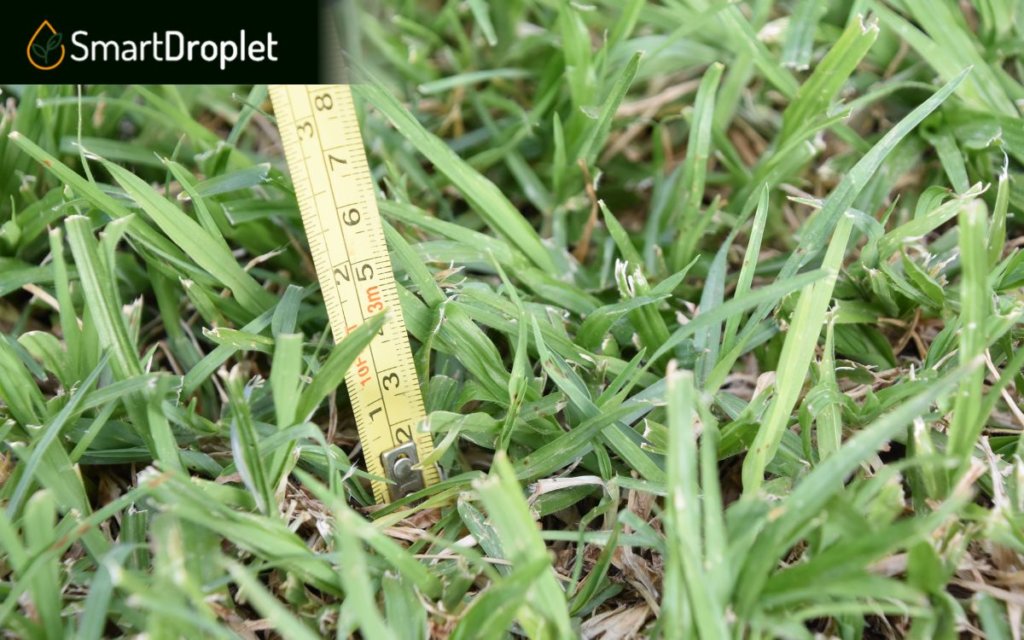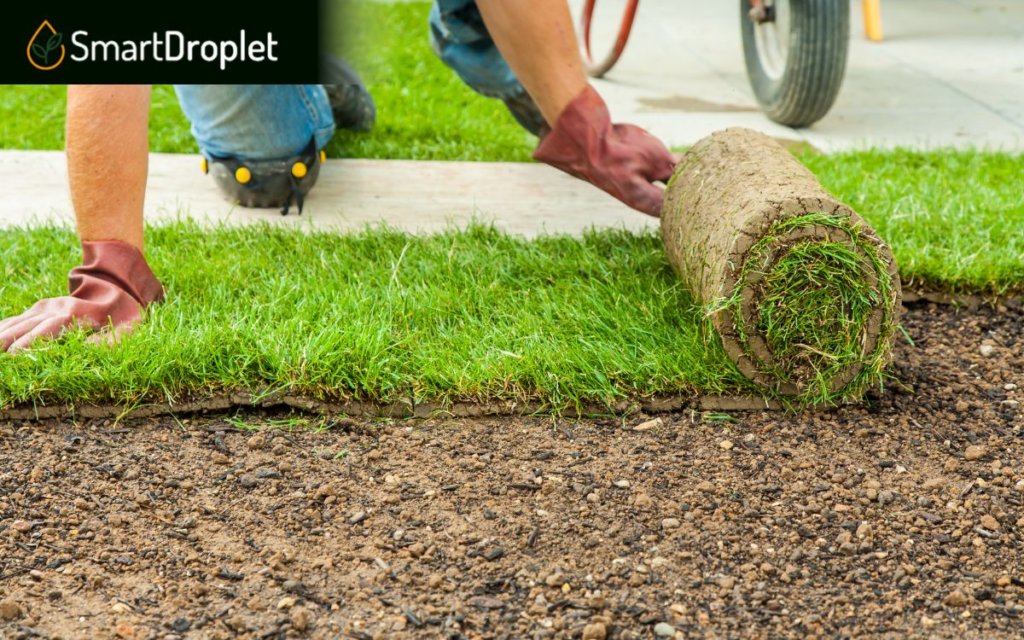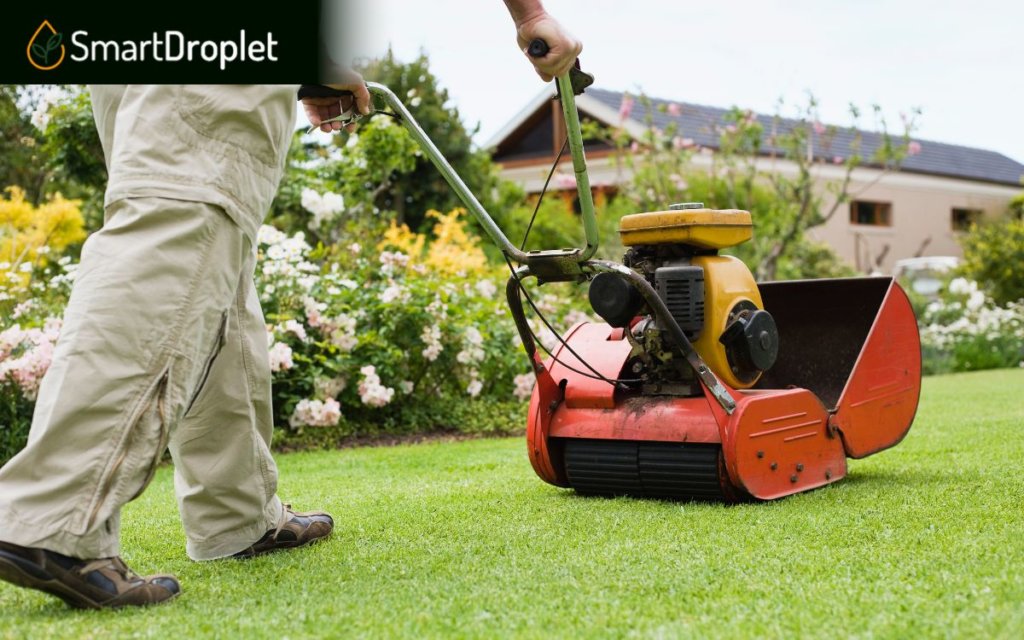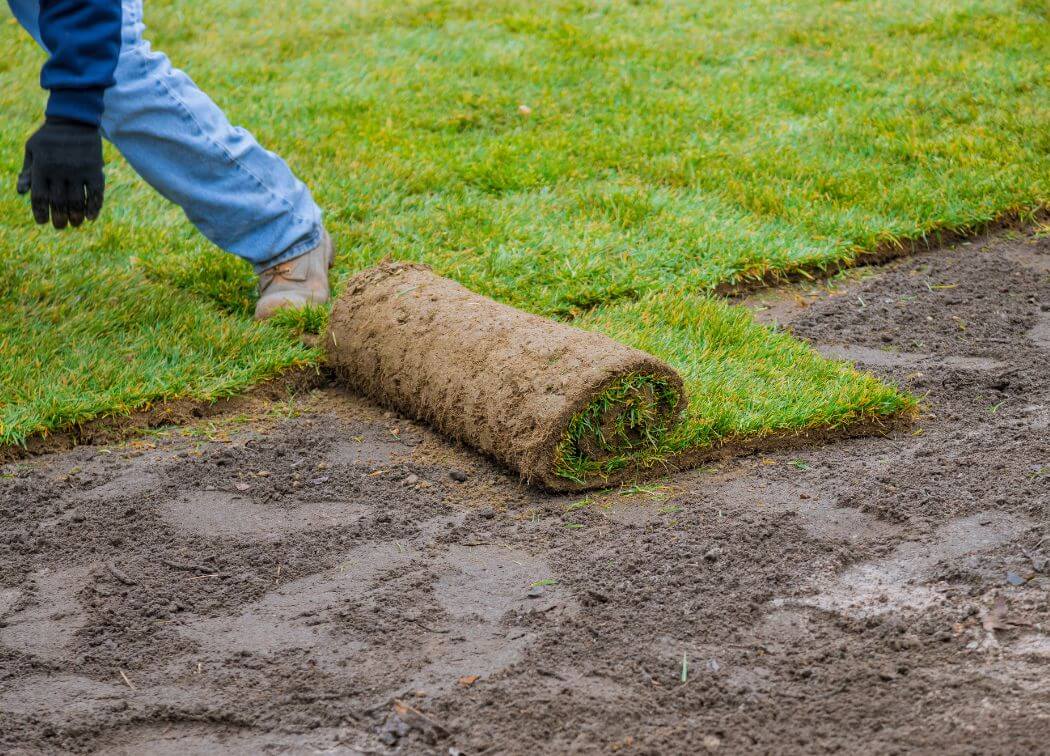If you’ve just finished a new sod installation, you might be itching to start mowing the lawn.
Hold on. Your newly sodded lawn will need some time to grow roots before you can get to mowing. Afterall, you don’t want to ruin your wonderfully sodded soil so soon.
You have to let your sod grow for about 1-2 weeks before you can start mowing it. It’s important to follow this gap period after installation, to give your new sod time it needs for root establishment. Once your new sod has grown enough, be sure to set your mowing height higher than normal, so as not to scalp the entire lawn. Ideally, you want to leave just enough grass so that the remainder can grow back thicker.
A rule of thumb: Ensure not to cut more than 1/3rd of the blade you are cutting regardless of its height, especially if you are aiming for a very SPECIFIC height.
Follow this guide for new sod care to have a lush, healthy lawn!
When Can I Mow New Sod?
Before you give your sod its first mowing, you’ll need to give it time to grow roots. This could take anywhere from 1 to 2 weeks, depending on your watering schedule, the soil type of your yard, and the fertilizer you use on your sod.
With enough proper watering, your sod should develop a proper root system!
Try to gently pull up one of your sod pieces to check your roots. If you feel like something’s pulling back, your roots are ready for mowing. Time to get that mower out and cut some grass!

What Height Should My New Sod Lawn Be?
Before your first mowing, double-check the kind of sod or seed you’ve got on your lawn.
As mentioned above, you want to trim your grass, not tear it out. Avoid unsightly bare spots on your lawn!
Different kinds of grass will grow to different heights, so check with your sod supplier to ensure.
It’s crucial to mow your grass to a height that’s just right; otherwise, there won’t be enough sod to regrow an even surface.
Take Kentucky bluegrass, for example. This tough little grass can’t be cut too low, so its sod should be mowed at around 1.5 to 2 inches tall.
Bermuda grass is a slightly different story. You can start mowing this hardy seed when it’s just half an inch tall!
Here’s a TIP: If you want your grass to be a specific height like 3 inches, you can mow it once it reaches about 3.5 inches.
No matter how tall your grass is, never cut more than 1/3rd of the blade. Don’t forget to sharpen your mowing blades before you mow new sod!
Once your sod is firm in the ground, let it sit. Stop watering it for a little, around two days. After this slight dry period, you can get to mowing!
Make sure you follow this drying time before you decide to mow your lawn. Otherwise, you might find the wet grass dulling your mower’s blades.
In the worst-case scenario, you’ll find yourself pulling up sections of your lawn!

Tips for Lawn Care Before Mowing Your New Sod
Here are some of the best TIPS and TRICKS on carefully maintaining your soil!
Fertilizing Before Mowing
Once you’ve had fresh sod installed on your lawn, before anything else, break out the fertilizer!
We recommend Lawnifi’s lawn starter box for this. This all-in-one pack has a liquid fertilizer with the right nutrients to help your new lawn grow strong roots.
Watering Before Mowing and During the Summer
After you fertilize your lawn, treat it to frequent watering. This schedule should begin as soon as the installation of your newly sodded lawn is finished.
For the next two weeks, you should be watering your sod lawn every day, from three up to five times daily.
Ensure that the new lawn gets enough water to soak further than the roots, about two inches under the soil.
If your new lawn were installed in summer, you’d need to use more water for your sod.
These times of hot weather will call for even more frequent watering because your sod will have to deal with dry soil and its growing season.
You don’t want dead spots marking your turf grass!
If your yard is too large for a hose to handle, don’t worry!
You can have an irrigation system installation set up for your lawn, and be sure to check that your sprinkler heads are handling every inch of your sod.
After watering, be sure to also check your soil’s moisture underneath the sod. You want to get the root zone enough water but not drown all of your sod. If your lawn looks flooded, that’s a sign to use less water for next time.
Be mindful of the weather as well. New sod won’t need to be watered quite as much during rainy seasons!
New Sod Care: Post-Mowing Routines
Once your lawn has passed the third week after installation, your sod should have solid roots. You’ll know this from going at it with your mower.
A healthy and freshly mowed lawn won’t need to be watered as often. You can now move into the maintenance phase. Keep watering your sod daily, but cap off with three watering sessions a day.
It would be best to lower your watering to twice every other day by week four.
Once it’s been five weeks or more since installation, you can water your sod two times a week. Don’t forget to water it; You don’t want to see the ground turn brown!
If your lawn has entered this independent phase, we’d recommend letting your sprinklers handle things from here. Set them to give your sod a watering session earlier and later in the evening.
These times are ideal for watering because the soil can retain its moisture for longer.

So What Happens After You’ve Mowed Your New Lawn?
Well-mowed lawns are healthy lawns and good-looking too!
When you constantly go over your grass with a mower, the leaves responsible for photosynthesis are lost, but this “trains” the grass.
The shoots left behind to catch up by sprouting faster, shorter, and thicker than before, making your turf nice and dense.
Good, dense turf can take weight easily without breaking and does not need as much maintenance as new sod. This means less watering for you (and your sprinklers!)
Frequently Asked Questions
If you have more questions and concerns about the topic, here’s the frequently asked questions section! There may be questions that others have asked that are similar to yours.
Hopefully, your concerns are answered in this article section!
How Do I Know My Sod Is Ready?
After waiting and watering for a few weeks, gently try to pull up a corner of your sod. Properly installed sod should hold firm if you feel any shifting in the soil; back off.
The sod is still going through its active growing season. Maintain your watering schedule for a few more days before trying again. Once the sod “pulls” back, you can get mowing!
What If I Mow My New Sod Too Soon?
Simple. You’ll end up tearing your grass out by the roots!
Now, a proper batch of installed sod might start growing a little early, giving you the false impression that it’s time for an early mow. Just wait.
A new sod lawn needs time for root development before it’s ready for mowing.
Don’t rush your sod unless you want to call your sod supplier again!
What Else Do New Lawns Need?
More than anything, newly installed sod needs peace to grow and put down roots.
This means no walking across the ground! At least, any homeowners should keep their visitors’ boots away from their sod.
If you put too much weight on the soil before it’s had enough time for proper root establishment, you’ll have unpleasant brown spots all over.
This also means you shouldn’t use a heavy lawn mower or lawn roller for now. No sense in flattening your sod before it can reach the soil.
How Do I Care For Sod During Different Seasons?
Winter signals your lawn to enter a dormant stage, so it’ll require less care than normal. But dormant doesn’t mean dead! Just remember to water your grass enough to keep it going.
If your sod is new, spring is the best time to fertilize it. But if your lawn has just come out of winter, it’s time for a trim! Sharpen your mower and get your grass back down to size.
We’ve covered the hot weather season already, so remember to water more frequently to counter the heat.
In the fall, it’s okay to keep your lawn a little shaggier. You can set your mowing height slightly higher but not too high. Otherwise, the grass might breakout into a disease.
Can I Use Seed?
We won’t stop you from using seed if you want!
Installing seed is cheaper than turf grass, plus you have more options for your lawn cover! Just be aware that seed lawns take much longer to get “up and running,” so to speak. Think two years instead of four weeks.
It also means more time spent on maintenance than sod, and weeds can mix in if you’re not careful.



